Most of us have probably traveled out of our home countries before. For many of us, this means traveling to a poverty-stricken, third world country beset by continual natural and political disaster. Upon arrival, you have either the option of toughing it out in the tangled, dirty streets of whichever interchangeable capital city you land in, or fleeing to take refuge in the insular world of ultra-commercialized tourism.
The first option leaves you negotiating strange streets packed with the often hopeless feeling that no matter how many beggars and children you could give money to, there will always be another more deserving person ten feet away, and that no matter what you do neither you nor anybody else will ever beat back the endless waves of desperation and injustice.
The second option leaves you being served cocktails—or some similar tourist treat—by the same people from before who, after you have retired to your cozy bungalow, will retreat to the same corrugated metal and cinderblock huts as the rest of their caste. You can do either, but after doing one or both a few times most travelers stare out of the window on their return flight home thinking, There must be a better way. There must be something I can do, but what?
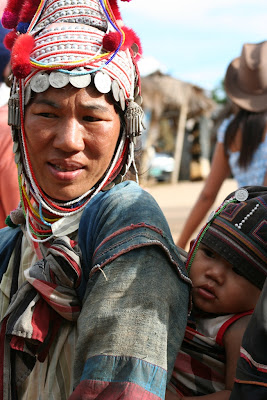
Volunteering allows you to form connection with people from all walks of life, such as Khun Lek, a Thai Hilltribe woman in Northern Thailand. Photograph by Nola Lee Kelsey
The tragic thing about these two options is that they represent a false choice. A third option exists. There is a better way. Sometimes we don’t do things not because we cannot, but because we do not realize they are even possible. The Voluntary Traveler shows how travelers can visualize, and then realize, this third option of folding volunteer service into tourism.
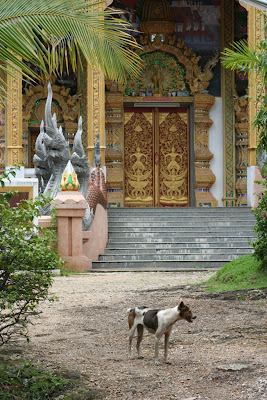
Volunteering takes you to places most tourists never see, such as Wat Doi Kam on the outskirts of Chiang Mai, Thailand. Photograph by Nola Lee Kelsey
Nola Lee Kelsey’s The Voluntary Traveler: Adventures from the Road Best Traveled is a collection of inspirational resources for idealistic travelers who want to see the world around them not just from the window of a hotel or a tour bus, but who want to actually interact meaningfully with the cultures they are visiting. Those who will enjoy the collection of firsthand accounts of “voluntourism” told in Kelsey’s collection will have probably traveled internationally before and, finding the packaged vacation and tour bus circuit hollow and unsatisfying, are now hungry to return from their trips not with tacky souvenirs, but with the knowledge that they have created actual enduring, positive change in the world.
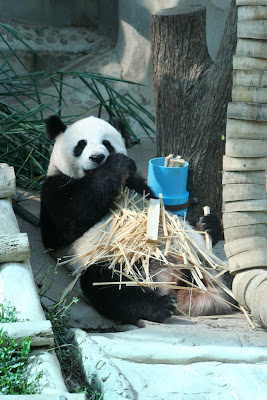
From primates to pandas volunteering with animals allows people to immerse in worlds they may never experienced at home. Photograph by Nola Lee Kelsey
The Voluntary Traveler is divided into two sections. In the first half of the book, contributing authors give their accounts of volunteering abroad; in the second, Kelsey gives a compilation of resources for the aspiring idealist complete with charity contact information, length of desired service, skills required, and other advice and recommendations to take into consideration when making a choice for a service project.
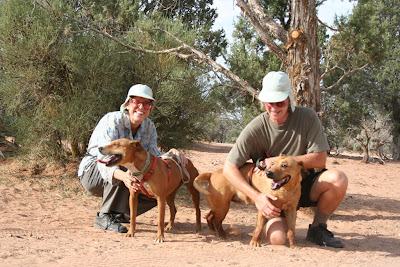
Volunteering is addictive. Children’s book author Jean Modesitt and illustrator Robin Spowart visited Best Friends Animal Sanctuary in Utah to volunteer. They ended up moving to the area and now volunteer at Best Friends’ Dogtown several days a week. Photograph by Nola Lee Kelsey
The stories from the first half of the book vary greatly in their content, length, and quality. While some of the stories are filled with accounts how of the authors made meaningful connections with their host cultures and were able to positively influence others, some stories give only cursory treatment of the actual work done, and instead negatively focus on some of the inevitable inconveniences associated with traveling to a new country and living in a different culture. Although a few accounts of volunteer service here may seem deterrent to prospective volunteers, they represent the reality that these experiences are individual and incredibly subjective. In Jeremy Douglas’s account of his service as an English teacher on the Royal Marshal Islands, he recounts being told by another volunteer that, “you can put as much or as little into the experience as you want.” Here, in The Voluntary Traveler, we see evidence of this statement. Some authors seem to have approached their service with more enthusiasm than others, and this is something that should be taken into consideration when planning for a service project. You have to make sure you care about what you are doing or your service will be something to endure rather than to enjoy. I need to repeat this here: you can put as much or as little into your experience as you want. Choose carefully.
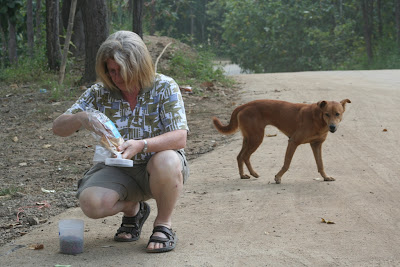
Care for Dogs volunteer Ally Taylor helps capture a dog to be neutered, Wat Doi Kam, Chiang Mai, Thailand. Photograph by Nola Lee Kelsey
Use The Voluntary Traveler as a starting point for your next adventure. Read the stories in the first half to realize some of the possibilities that are out there for you in the world, and understand exactly how much of a difference you can make to those around you. Then, page through the second half and imagine yourself working at a wild animal rescue center in the Amazon, or caring for children at a Tanzanian orphanage. You don’t have to settle for shuffling through museums and buying bric-a-brac for people back home (They’ll just throw it away anyway). There is a better way.
There is a third option. It is you.
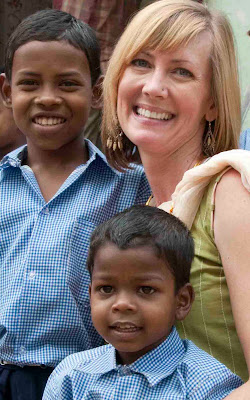
Volunteering changes lives. The Voluntary Traveler’s contribution author Shelley Seale traveled to India with The Miracle Foundation, a journey which helped to inspire her book, The Weight of Silence: Invisible Children of India.
For more information, please see: http://dogseyeviewmedia.com/
--
Brett Jones is a teacher in the Peace Corps Kyrgyzstan.

